| Acoustics of the saxophone |
Bb tenor saxophone |
G6 |
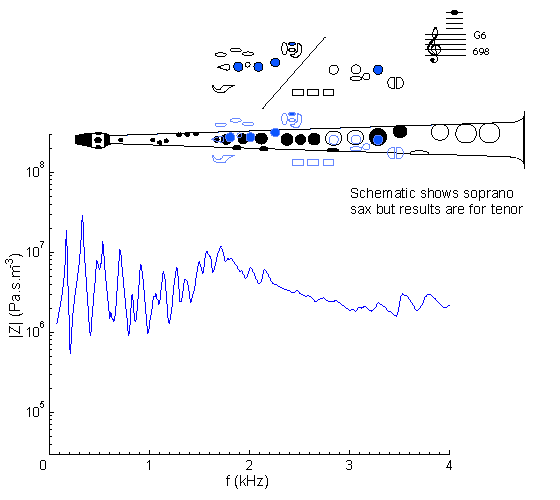
|
Fingering Acoustic schematic Non-specialist introduction
to acoustic impedance Notes are the written pitch. |
This is the first note in the third register, meaning that it plays at the third impedance peak. It is also the first or second note in the altissimo or very high range. The weakness of the third peak (due to the relatively large cone angle of the saxophone) explains why notes in this range are hard to play and require the player to assist the weak impedance peak of the bore with a strong impedance peak of the vocal tract. See this page for an explanation and some interesting results.
Although this is the lowest note in the altissimo range, it is one of the hardest, because of the weakness of this peak. Compare with G#6, which has a stronger third peak.
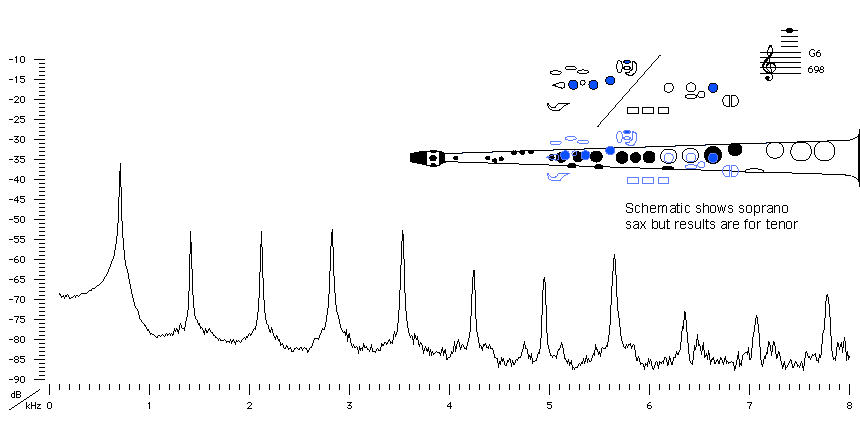
Sound spectrum
of a Bb saxophone
played using fingering for G6.
For more explanation, see
Introduction to saxophone acoustics.
Alternative Fingering |
tenor saxophone |
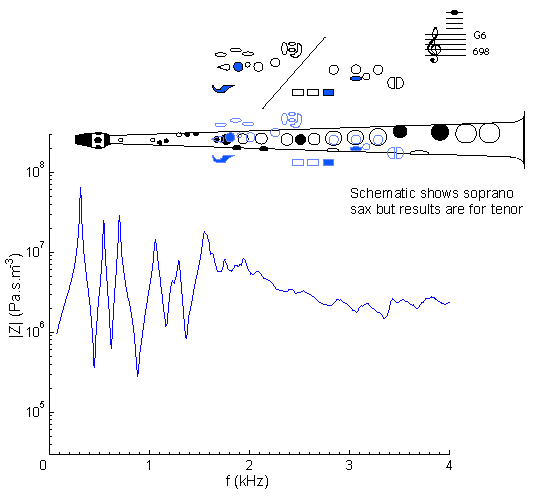 |
Fingering Acoustic schematic Non-specialist introduction
to acoustic impedance Notes are the written pitch. |
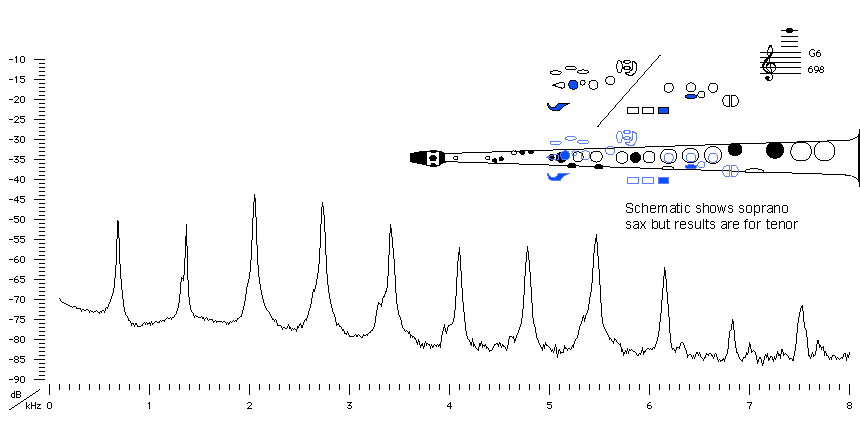
2nd alternative Fingering |
tenor saxophone |
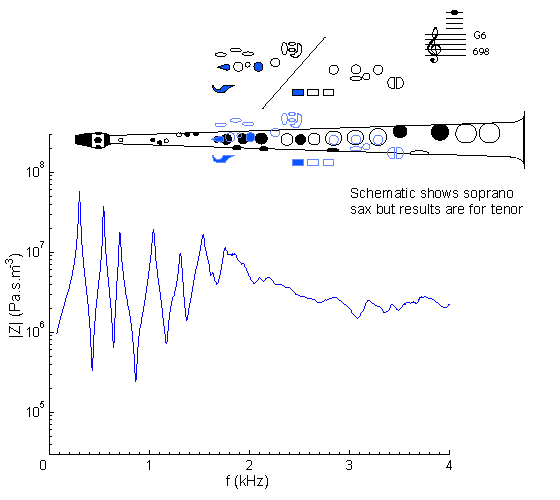 |
Fingering Acoustic schematic Non-specialist introduction
to acoustic impedance Notes are the written pitch. |
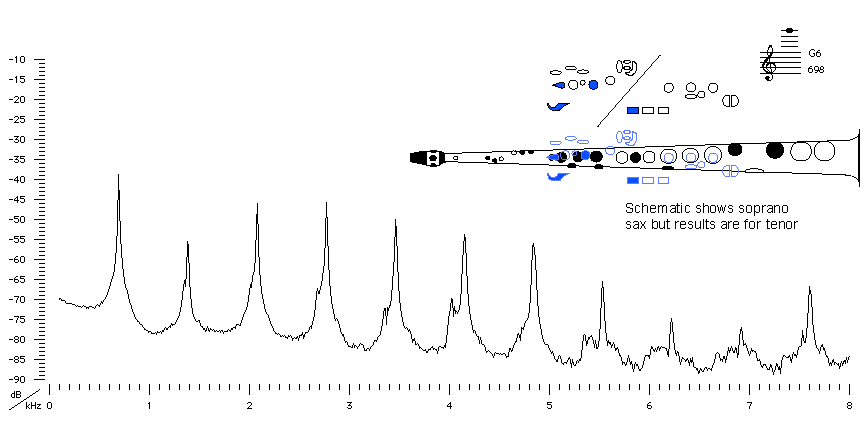
|
Contact:
Joe Wolfe
/ J.Wolfe@unsw.edu.au |